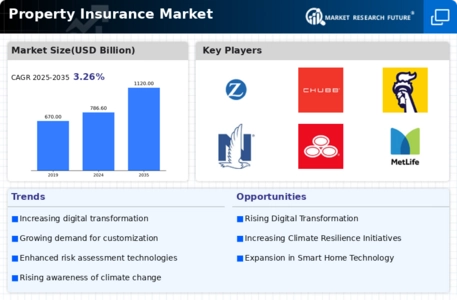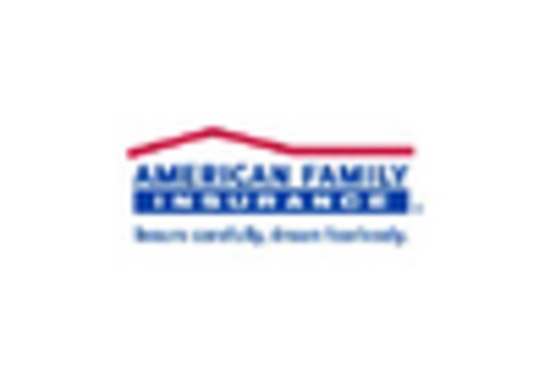Regulatory Changes
Regulatory frameworks governing the Property Insurance Market are evolving, with governments implementing stricter guidelines to ensure consumer protection and financial stability. These changes may include mandates for clearer policy disclosures and requirements for insurers to maintain adequate reserves. Such regulations can influence market dynamics by fostering competition among insurers, potentially leading to more favorable pricing for consumers. Furthermore, compliance with these regulations may necessitate technological investments by insurers, thereby driving innovation within the Property Insurance Market. As a consequence, the interplay between regulation and market practices could shape the future landscape of property insurance.
Technological Advancements
Technological advancements are revolutionizing the Property Insurance Market, enabling insurers to enhance their service offerings and streamline operations. Innovations such as artificial intelligence, big data analytics, and the Internet of Things are being leveraged to improve risk assessment and claims processing. For instance, insurers can utilize data analytics to better understand customer behavior and tailor policies accordingly. This technological integration not only enhances customer experience but also increases operational efficiency, potentially leading to cost savings for insurers. As technology continues to evolve, the Property Insurance Market is likely to witness significant transformations in how insurance products are developed and delivered.
Increasing Natural Disasters
The frequency and intensity of natural disasters, such as hurricanes, floods, and wildfires, have escalated in recent years, significantly impacting the Property Insurance Market. According to data, the economic losses from natural disasters have surged, leading to a heightened demand for property insurance coverage. Insurers are compelled to adjust their risk assessments and pricing models to account for these changing environmental conditions. This trend suggests that property owners are increasingly seeking comprehensive insurance solutions to protect their assets from potential catastrophic events. As a result, the Property Insurance Market is likely to experience growth driven by the need for enhanced coverage options and risk management strategies.
Rising Consumer Expectations
As consumers become more informed and discerning, their expectations regarding property insurance products are rising. The Property Insurance Market is responding to this shift by offering more personalized and flexible insurance solutions. Consumers are increasingly seeking policies that align with their specific needs, such as coverage for unique risks or customizable deductibles. This trend is prompting insurers to innovate and differentiate their offerings to attract and retain customers. Additionally, the demand for transparency in policy terms and pricing is growing, compelling insurers to adopt clearer communication strategies. Consequently, the Property Insurance Market is likely to evolve in response to these changing consumer preferences.
Urbanization and Population Growth
Rapid urbanization and population growth are reshaping the Property Insurance Market, as more individuals and families seek housing in urban areas. This trend has led to an increase in property values and, consequently, a greater need for insurance coverage. Data indicates that urban areas are experiencing a surge in construction activities, which further amplifies the demand for property insurance. Insurers are adapting their offerings to cater to the unique risks associated with urban living, such as higher crime rates and increased exposure to natural disasters. Thus, the Property Insurance Market is poised for expansion as urbanization continues to drive insurance needs.

















Leave a Comment